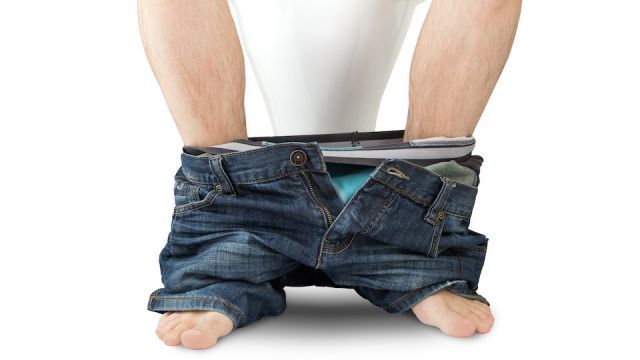
So, I bet you didn’t know that there was such a thing as a good poop? Perhaps you have not given it that much thought. Maybe just the word poop grosses you out! What you need to know, however, is that when it comes to body function and overall health, your poop is like a mirror. If you don’t look in the mirror from time to time, you could be missing essential signals your body is trying to give you. Ultimately, knowing the difference between a good poop and a bad poop really matters.
What is poop?
Feces are the remains of food and bacteria that ferment in your gut – stuff that your small intestine can’t digest or absorb. Although poop is mostly water, that amount can vary depending on what we eat. The average poop is about 75 percent water.
Poop also contains bacterial biomass – a collective of alive and dead organisms that make up between 25-54 percent of the dry weight of poop. The remaining is mostly undigested carbohydrate, fiber, protein, fat and dead cells from the wall of the gastrointestinal tract.
A few poop truths:
- Pooping unites the entire animal kingdom together. We all poop. The average human poops 1.2 times in 24 hours, producing about 128 grams of poop in that time.
- Poop is essential to the wheel of life. It acts like a fertilizer for some organisms and serves as a tasty lunch for others.
- Poop carries waste out of the body.
- Neil Armstrong left four bags of poop on the moon.
- The brown color of poop comes from metabolic waste products.
Knowing what to look for
We can learn a great deal about how our digestive system is functioning by the sight, sound, and even smell of our poop. Here are some things to keep in mind when you take a little peek.
Distinguishing features of a good poop
- Solid, smooth and log-shaped
- Chocolate brown color
- Sinks to the bottom of the toilet
- Contains no blood, mucous or fat
- Has no odor
Distinguishing features of a bad poop
- Formless or loose
- Pale in color
- Floats on the surface of the water
- Contains deposits of blood, fat and mucous
- Has a bad odor
Bristol Poop Chart
When doctors at the Bristol Royal Infirmary Hospital in Bristol, England found that patients were reluctant to talk about the shape and nature of their stools, they devised a handy chart called the Bristol Stool Form Scale.
This self-diagnostic chart helps patients discuss their bowel habits without becoming embarrassed. It is now being used all over the world as a measuring tool for bowel and digestive health.
Eating your way to a better poop
Your diet has a lot to do with whether or not you have a good poop or a bad poop. Consuming a diet high in processed foods may lead to poor digestion and improper bowel function. Foods made with refined ingredients such as white flour and sugar can cause constipation, and it is best to avoid these at all costs.
On the flip side, a diet rich in fruits and vegetables supplies the body with vitamins, minerals, antioxidants, and dietary fiber which promotes healthy bowel function. Dietary fiber helps the body to break down food and fosters easy elimination of waste products.
Drinking enough water is also essential to good pooping.
Consume at least 48 oz. of pure, filtered water each day, more if you are active or outside. Drinking water helps regulate bowel movements and aids in the digestion and assimilation of nutrients.
Pooping position
Believe it or not, there is a better way to have a poop. According to many leading health professionals, the toilet is not conducive to healthy bowel function. In fact, our toilets promote such things as Inflammatory bowel disorder, constipation, and hemorrhoids.
Quite simply, the modern toilet changes the way that we poop. Sitting to evacuate the bowels requires you to strain, which can have some unwanted biological effects, including a temporary disruption in cardiac flow. Evidence suggests that bowel and pelvic problems may be related to improper posture on the potty.
Squatting is one of the best interventions to prevent constipation and other bowel problems and to put the least amount of pressure on digestion and bowel function. When we squat to eliminate the bowels, gravity does most of the work.
The weight of the pelvis presses against the thighs and naturally compresses the colon. Pressure from the diaphragm can supplement the force of gravity. Squatting relaxes the puborectalis muscle, which normally chokes the rectum to maintain continence.
The easiest way to achieve the squatting position is to use a squatting stool, better known as a “squatty potty.” These little, relatively inexpensive stools have been shown to make elimination faster, easier, and more complete, and may even prevent colon cancer and other conditions such as appendicitis
Takeaway: The next time you have a bowel movement, take a peek. Keep a record of your poop if you suspect something is amiss. Try squatting for quicker and more complete elimination.
-The Alternative Daily

